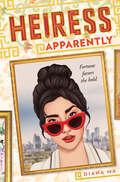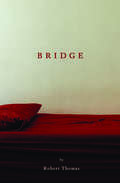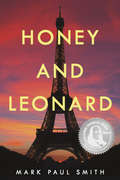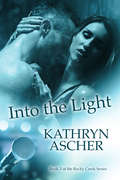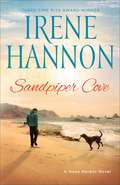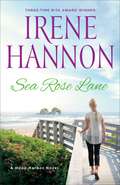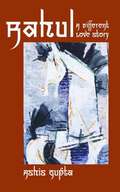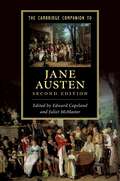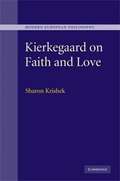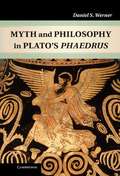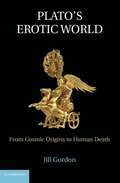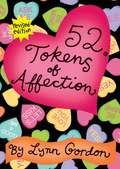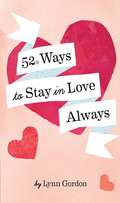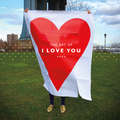- Table View
- List View
Heiress Apparently (Daughters of the Dynasty)
by Diana MaDiana Ma’s Heiress Apparently is the first book in the epic and romantic Daughters of the Dynasty YA series following the fictionalized descendants of the only officially recognized empress regent of China. Gemma Huang is a recent transplant to Los Angeles from Illinois, having abandoned plans for college to pursue a career in acting, much to the dismay of her parents. Now she’s living with three roommates in a two-bedroom hovel, auditioning for bit roles that hardly cover rent. Gemma’s big break comes when she’s asked to play a lead role in an update of M. Butterfly filming for the summer in Beijing. When she arrives, she’s stopped by paparazzi at the airport. She quickly realizes she may as well be the twin of one of the most notorious young socialites in Beijing. Thus kicks off a summer of revelations, in which Gemma uncovers a legacy her parents have spent their lives protecting her from—one her mother would conceal from her daughter at any cost. “More than a cute rom-com, this novel highlights LGBTQ+ rights, contemporary attitudes held by Chinese citizens, Chinese history, Hollywood’s ethnic prejudices, and pride in culture and family. . . this is a fun start to a promising series.” —Booklist Daughters of the Dynasty series:Heiress ApparentlyHer Rebel Highness
Bridge: A Bridge To Decision Making (American Writers Ser. #No. 5)
by Robert ThomasBridge is a collection of linked-stories about a troubled young woman?Alice?who works at a San Francisco law firm. Alice goes through despair and occasional rapture as she struggles with simultaneously real and hallucinated relationships with her co-worker David (of the romantic variety) and her supervisor Fran. Passionate, whip-smart, furious, and perceptive, Alice contemplates both suicide and murder as she struggles to find meaning in the day-to-day interactions of her life.Robert Thomas holds an MFA from Warren Wilson College. He lives in Oakland, California, and works as a legal secretary in San Francisco.
Sandpiper Cove: A Hope Harbor Novel
by Irene HannonHope Harbor police chief Lexie Graham has zero time for romance--but the handsome ex-con she enlists to help her with a wayward teen may convince her to make time for love.
Sea Rose Lane: A Hope Harbor Novel
by Irene HannonEric Nash returned home to Hope Harbor to plot his next career move, but he soon finds himself distracted by the attractive architect who is renovating his father’s house.
Rahul
by Ashis GuptaA sequel to 'Krishna, A Love Story', 'Rahul' is set against the backdrop of two critical events that impacted Indian political history in the late 1960s and early 1970s. One was the rise of a Maoist movement espousing the cause of landless farmers; the other, India's war with Pakistan, which led to the creation of Bangladesh. Like thousands of young students, many from affluent families, Rahul, himself the son of a landowner, is drawn to the Maoists. Eventually, the movement was infiltrated by the CIA. With he movement's collapse,many Maoists (also known as Naxalites) found refuge in North America. Rahul was one such beneficiary.
Antony and Cleopatra (The New Cambridge Shakespeare)
by William Shakespeare David BevingtonA magnificent drama of love and war, this riveting tragedy presents one of Shakespeare's greatest female characters--the seductive, cunning Egyptian queen Cleopatra. The Roman leader Mark Antony, a virtual prisoner of his passion for her, is a man torn between pleasure and virtue, between sensual indolence and duty . . . between an empire and love. Bold, rich, and splendid in its setting and emotions, Antony And Cleopatra ranks among Shakespeare's supreme achievements.
Britain, France and the Gothic, 1764-1820
by Angela WrightIn describing his proto-Gothic fiction, The Castle of Otranto (1764), as a translation, Horace Walpole was deliberately playing on national anxieties concerning the importation of war, fashion and literature from France in the aftermath of the Seven Years' War. In the last decade of the eighteenth century, as Britain went to war again with France, this time in the wake of revolution, the continuing connections between Gothic literature and France through the realms of translation, adaptation and unacknowledged borrowing led to strong suspicions of Gothic literature taking on a subversive role in diminishing British patriotism. Angela Wright explores the development of Gothic literature in Britain in the context of the fraught relationship between Britain and France, offering fresh perspectives on the works of Walpole, Radcliffe, 'Monk' Lewis and their contemporaries.
The Cambridge Companion to Gothic Fiction
by Jerrold E. HogleFourteen world-class experts on the Gothic provide thorough accounts of this haunting-to-horrifying genre from the 1760s to the end of the twentieth century. Essays explore the connections of Gothic fictions to political and industrial revolutions, the realistic novel, the theater, Romantic and post-Romantic poetry, nationalism and racism from Europe to America, colonized and post-colonial populations, the rise of film, the struggles between "high" and "popular" culture, and changing attitudes towards human identity, life and death, sanity and madness. The volume also includes a chronology and guides to further reading.
The Cambridge Companion to Jane Austen
by Edward Copeland Juliet Mcmaster"Jane Austen's stock in the popular marketplace has never been higher, while academic studies continue to uncover new aspects of her engagement with her world. This fully updated edition of the acclaimed Cambridge Companion offers clear, accessible coverage of the intricacies of Austen's works in their historical context, with biographical information and suggestions for further reading. Major scholars address Austen's six novels, the letters and other works, in terms accessible to students and the many general readers, as well as to academics. With seven new essays, the Companion now covers topics that have become central to recent Austen studies, for example, gender, sociability, economics, and the increasing number of screen adaptations of the novels"--"The image that Henry Austen creates - at odds with the evidence that both Austen's letters and her publishing decisions offer of her professionalism - is precisely the one that so annoyed Henry James, according to Brian Southam: 'the myth of the inspired amateur, the homely spinster who put down her knitting needles to take up her pen'. That myth, and others like it, have prevented subsequent readers from understanding that, for Austen, being a professional writer was, apart from her family, more important to her than anything else in her life. Austen wrote when opportunities for women to publish had never been greater, and from her childhood her aim was to see her works in print. She collected her juvenilia in volumes made to resemble published books as closely as possible"--
The Cambridge Companion to the Modern Gothic
by Jerrold E. HogleThis Companion explores the many ways in which the Gothic has dispersed in the twentieth and twenty-first centuries, and in particular how it has come to offer a focus for the tensions inherent in modernity. Fourteen essays by world-class experts show how the Gothic in numerous forms - including literature, film, television, and cyberspace - helps audiences both to distance themselves from and to deal with some of the key underlying problems of modern life. Topics discussed include the norms and shifting boundaries of sex and gender, the explosion of different forms of media and technology, the mixture of cultures across the western world, the problem of identity for the modern individual, what people continue to see as evil, and the very nature of modernity. Also including a chronology and guide to further reading, this volume offers a comprehensive account of the importance of Gothic to modern life and thought.
Communicating Affection
by Kory FloydExplores how and why people express affection, the many positive effects it can have, and the risks it often carries.
Emotions in the Moral Life
by Robert C. RobertsRobert C. Roberts extends to the moral life the account of emotions presented in his Emotions: An Essay in Aid of Moral Psychology (2003), that they are "concern-based construals." In this book the author explains how emotions can be a basis for moral judgments, how they account for the deeper moral identity of actions we perform, how they are constitutive of morally valenced personal relationships like friendship, enmity, collegiality and parenthood, and how both pleasant and unpleasant emotions interact with our personal wellbeing (eudaimonia). He argues that none of these dimensions of emotions' values is reducible to any of the others. He continues by sketching how all of these moral dimensions contribute to emotions' participation, in diverse ways, in our virtues and vices.
Kierkegaard and the Problem of Self-Love
by John LippittThe problem of whether we should love ourselves – and if so how – has particular resonance within Christian thought and is an important yet underinvestigated theme in the writings of Søren Kierkegaard. In Works of Love, Kierkegaard argues that the friendships and romantic relationships which we typically treasure most are often merely disguised forms of 'selfish' self-love. Yet in this nuanced and subtle account, John Lippitt shows that Kierkegaard also provides valuable resources for responding to the challenge of how we can love ourselves, as well as others. Lippitt relates what it means to love oneself properly to such topics as love of God and neighbour, friendship, romantic love, self-denial and self-sacrifice, trust, hope and forgiveness. The book engages in detail with Works of Love, related Kierkegaard texts and important recent studies, and also addresses a wealth of wider literature in ethics, moral psychology and philosophy of religion.
Kierkegaard on Faith and Love
by Sharon KrishekKierkegaard's writings are interspersed with remarkable stories of love, commonly understood as a literary device that illustrates the problematic nature of aesthetic and ethical forms of life, and the contrasting desirability of the life of faith. Sharon Krishek argues that for Kierkegaard the connection between love and faith is far from being merely illustrative. Rather, love and faith have a common structure, and are involved with one another in a way that makes it impossible to love well without faith. Remarkably, this applies to romantic love no less than to neighbourly love. Krishek's original and compelling interpretation of the Works of Love in the light of Kierkegaard's famous analysis of the paradoxicality of faith in Fear and Trembling shows that preferential love, and in particular romantic love, plays a much more important and positive role in his thinking than has usually been assumed.
Myth and Philosophy in Plato'S Phaedrus
by Daniel S. Werner"Plato's dialogues frequently criticize traditional Greek myth, yet Plato also integrates myth with his writing. Daniel S. Werner confronts this paradox through an in-depth analysis of the Phaedrus, Plato's most mythical dialogue. Werner argues that the myths of the Phaedrus serve several complex functions: they bring nonphilosophers into the philosophical life; they offer a starting point for philosophical inquiry; they unify the dialogue as a literary and dramatic whole; they draw attention to the limits of language and the limits of knowledge; and they allow Plato to co-opt cultural authority as a way of defining and legitimating the practice of philosophy. Platonic myth, as a species of traditional tale, is thus both distinct from philosophical dialectic and similar to it. Ultimately, the most powerful effect of Platonic myth is the way in which it leads readers to participate in Plato's dialogues and to engage in a process of self-examination"--
Plato's Erotic World
by Jill GordonPlato's entire fictive world is permeated with philosophical concern for eros, well beyond the so-called erotic dialogues. Several metaphysical, epistemological, and cosmological conversations - Timaeus, Cratylus, Parmenides, Theaetetus, and Phaedo - demonstrate that eros lies at the root of the human condition and that properly guided eros is the essence of a life well lived. This book presents a holistic vision of eros, beginning with the presence of eros at the origin of the cosmos and the human soul, surveying four types of human self-cultivation aimed at good guidance of eros, and concluding with human death as a return to our origins. The book challenges conventional wisdom regarding the "erotic dialogues" and demonstrates that Plato's world is erotic from beginning to end: the human soul is primordially erotic and the well cultivated erotic soul can best remember and return to its origins, its lifelong erotic desire.
The Seduction Narrative in Britain, 1747–1800
by Katherine BinhammerEighteenth-century literature displays a fascination with the seduction of a virtuous young heroine, most famously illustrated by Samuel Richardson's Clarissa and repeated in 1790s radical women's novels, in the many memoirs by fictional or real penitent prostitutes, and in street print. Across fiction, ballads, essays and miscellanies, stories were told of women's mistaken belief in their lovers' vows. Katherine Binhammer surveys seduction narratives from the late eighteenth century within the context of the new ideal of marriage-for-love and shows how these tales tell varying stories of women's emotional and sexual lives. Drawing on new historicism, feminism, and narrative theory, Binhammer argues that the seduction narrative allowed writers to explore different fates for the heroine than the domesticity that became the dominant form in later literature. This study will appeal to scholars of eighteenth-century literature, social and cultural history, and women's and gender studies.
Socrates' Daimonic Art
by Elizabeth S. BelfioreDespite increasing interest in the figure of Socrates and in love in ancient Greece, no recent monograph studies these topics in all four of Plato's dialogues on love and friendship. This book provides important new insights into these subjects by examining Plato's characterization of Socrates in Symposium, Phaedrus, Lysis and the often neglected Alcibiades I. It focuses on the specific ways in which the philosopher searches for wisdom together with his young interlocutors, using an art that is 'erotic', not in a narrowly sexual sense, but because it shares characteristics attributed to the daimon Eros in Symposium. In all four dialogues, Socrates' art enables him, like Eros, to search for the beauty and wisdom he recognizes that he lacks and to help others seek these same objects of erôs. Belfiore examines the dialogues as both philosophical and dramatic works, and considers many connections with Greek culture, including poetry and theater.
Why Love Leads to Justice
by Richards, David A. J.This book tells the stories of notable historical figures who, by resisting patriarchal laws condemning adultery, gay and lesbian sex, and sex across the boundaries of religion and race, brought about lasting social and political change. Constitutional scholar David A. J. Richards investigates the lives of leading transgressive artists, social critics, and activists including George Eliot, Benjamin Britten, Christopher Isherwood, Bayard Rustin, James Baldwin, Eleanor Roosevelt, and Margaret Mead. Richards shows how ethical empowerment, motivated by love, allowed these figures to resist the injustices of anti-Semitism, racism, sexism, and homophobia, leading to the constitutional condemnation of these political evils in the United States, Britain, and beyond. Love and law thus grow together, and this book shows how and why. Drawing from developmental psychology (including studies of trauma), political theory, the history of social movements, literature, biography, and law, this book will be a thought-provoking tool for anyone interested in civil rights.
52 Series: Great Cheap Dates
by Lynn Gordon Susan SynarskiThese playfully illustrated cards describe 52 dates that won't challenge your budget. After all, a great date really only requires: a little imagination, the right attitude, and a delightful playmate. They are perfect for afternoon adventures, serious seductions, and romantic rendezvous.
52 Series: Tokens of Affection
by Lynn Gordon Karen JohnsonPacked with simple, sweet and utterly unique ways to say "I love you," this edition of the best-selling deck is the perfect guide for the aspiring romantic, and features a variety of activities and illustrations.
52 Ways to Stay in Love Always (52 Series)
by Lynn GordonThis refreshed version of the classic 52 deck is full of bite-sized wisdom for couples. With a tip for every week of the year, this makes a great book for Valentine's Day, anniversaries, or any romantic occasion.LOVE THROUGHOUT THE YEAR: Choose one page a week for romance all year long, or pick a page whenever you need to reconnect with your partner.
The Art of I Love You
by Chronicle BooksThis valentine of a book is brimming with hip contemporary art celebrating matters of the heart. Flowers, hearts, doilies, chocolates, and couples holding hands are all reinvented here with a cool modern twist to create a new visual vocabulary that expresses all those tender sentiments we can't quite find the words for. Featuring contributions by such beloved artists as Gemma Correll, Julia Rothman, Rifle Paper Co., and many more, this showcase of creative talent will tug at the heartstrings and delight the eyes. Chock-full of inventive ways to say "I Love You," this little treasure will win the heart of any art lover and the heart of that special valentine.
